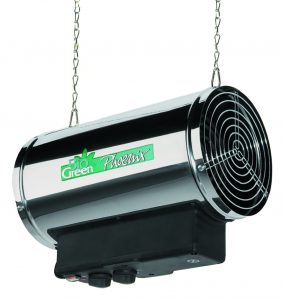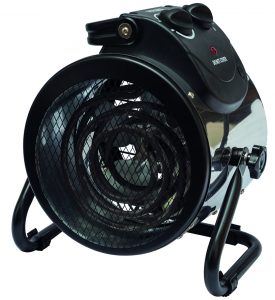During spring your greenhouse serves as a growing space for seedlings, in summer it is full of fresh vegetables, and in autumn you can often keep harvesting your summer plants. But can you also use your greenhouse in the winter, so you can practice your hobby all year round and get an extra return on your garden investment? We say yes and share below 5 ways to use your greenhouse in winter.
Tip : Clean your greenhouse.
In October you harvest the last of your tomatoes, eggplants, peppers and cucumbers. Time to clean up your plants, because by then they are often already affected by mildew and it is appropriate to remove the mold. By the way, never just throw diseased, mold-infested plants on the compost pile. Rather, put them in the GFT bin or drop them off at a container park near you.
Little by little, your greenhouse will become empty. Before you get started with your winter crops, it’s a good idea to give your greenhouse an autumn cleaning. Especially if there are green deposits on the windows, it’s important to remove them so the sunlight can still get in properly.
Take out all the plants and clean up well the corners of the greenhouse. Then wash the windows vigorously with warm water and an organic soap. Disinfecting your greenhouse with bleach is not a good idea, as the bleach soaks into the soil and can cause damage to the soil, the insects that live there and the plants you will be growing in your greenhouse.
1. Growing plants in a cold greenhouse
Many greenhouse beginners think that greenhouse growing stops in the fall, but nothing could be further from the truth! For those who really want their greenhouse to pay off, the fun of harvesting continues. So you can still grow various vegetables in the greenhouse in October. This can be done in containers, but also as perennials in your greenhouse. Early types of lettuce, lamb’s lettuce, winter spinach, winter purslane and chervil can still be planted in the fall in your cold greenhouse. You can then harvest these in early winter for delicious fresh winter salads, steamy curries and heart-warming soup.
2. Pre-seed in the greenhouse during winter
The temperature in your greenhouse in winter is usually between 5°C and 10°C. Perfect to pre-sow various plants such as radishes and carrots starting in late February or early March. They germinate well in the winter sun and from April/May you can plant them out in the garden or in vegetable boxes. Note: In winter, temperatures in the greenhouse can still drop to freezing point at night. Then it is best to take your seedlings inside to protect them from frost.
Do you want to start sowing even earlier in the greenhouse during winter? Then you can choose to heat your greenhouse. This can be done with various greenhouse accessories such as an ACD® Phoenix or Palma heater. Of course, for an electric heater, you’ll need electricity in your greenhouse. Good news if you have a wall-mounted greenhouse, because then it’s pretty simple to run electricity from inside through the wall.

Phoenix – This heater is easy to control and safe to use. With powerful fan, suitable for greenhouses up to 20 m².

Palma – Despite its compact shape, this stove is very powerful. And most importantly, it looks beautiful. It therefore fits perfectly in your greenhouse, up to 12 m².
Tip : Provide bubble wrap inside your greenhouse in the winter.
In winter, it’s a good idea to apply a sturdy bubble wrap to the inside of your greenhouse. This is because bubble wrap is insulating and can thus raise the temperature inside your greenhouse by a few degrees. It protects your greenhouse perennials so that you can continue harvesting certain crops worry-free even in winter. You attach the film with clips, which easily hook into the profile and construction of your greenhouse.
3. Overwintering plants in the greenhouse
Do you have movable containers that you can’t handle in the winter? Or do you have exotic plants in your garden that need to be kept frost-free during the winter? Then your greenhouse is the ideal place to overwinter them. Plants in pots or a kitchen garden container can be wrapped in bubble wrap during the winter. Are they exotic plants that really can’t stand the cold? Then provide fleece or freezer cloths and if possible an electric heater.
Tip : ensilage your harvest.
Do you want to enjoy the potatoes, leeks, carrots, beets and cabbages that you find difficult to grow during the winter for longer? No problem, because by ensiling them you can easily store them for a few months. An ancient method, but very effective!
Silaging is done like this:
● Make a pit about 25 centimeters deep.
● Line the pit with chicken wire so that mice and rats can’t get to your harvest.
● Fill the pit with straw and put the vegetables in it.
● Arrange the vegetables so they are just barely touching each other for optimal air circulation, which helps avoid diseases and mold.
● Seal the pit with straw and soil.
4. A sheltered place for chickens and other garden animals
Are you yourself not going to use your greenhouse in the winter, or will it become a mere storage area? Then maybe you can let your garden animals enjoy this warm, sheltered place. For example, put your chicken coop in the greenhouse in winter so your chickens can roam and sleep warm and sheltered.
Tip : Chickens in the greenhouse.
Did you know that chickens in the greenhouse also benefit your winter crops? The chickens give off heat and breathe out CO2. Two things your plants love!
5. Using your greenhouse as a garden room in winter
Finally, you can also enjoy your greenhouse in winter. No matter what kind of greenhouse you have, you can dress it up as a garden room! Perfect for reading a book in the winter sun, watching the stars at night or hosting a cozy winter barbecue. Soak up the splendor of your garden even when it’s cold or raining.

→ Also read: what is a greenhouse? The difference between a greenhouse, garden room and veranda explained.
Tip : Preparing your soil for spring.
Is the end of winter near and spring is coming? Then it’s time to prepare the soil in your greenhouse for spring. It is recommended to change the top ten cm of soil every year to avoid pests, diseases and weeds. Also, give the soil in your greenhouse a healthy boost with a green manure crop. Winter snowfall? Then take the opportunity to spread a layer of snow over your soil. The moisture will wash away excess salt in the soil, ensuring fresh, healthy soil!
Want more tips on installing, maintaining and using your greenhouse? Check out our informative blogs and follow us on Instagram for daily vegetable garden updates!
